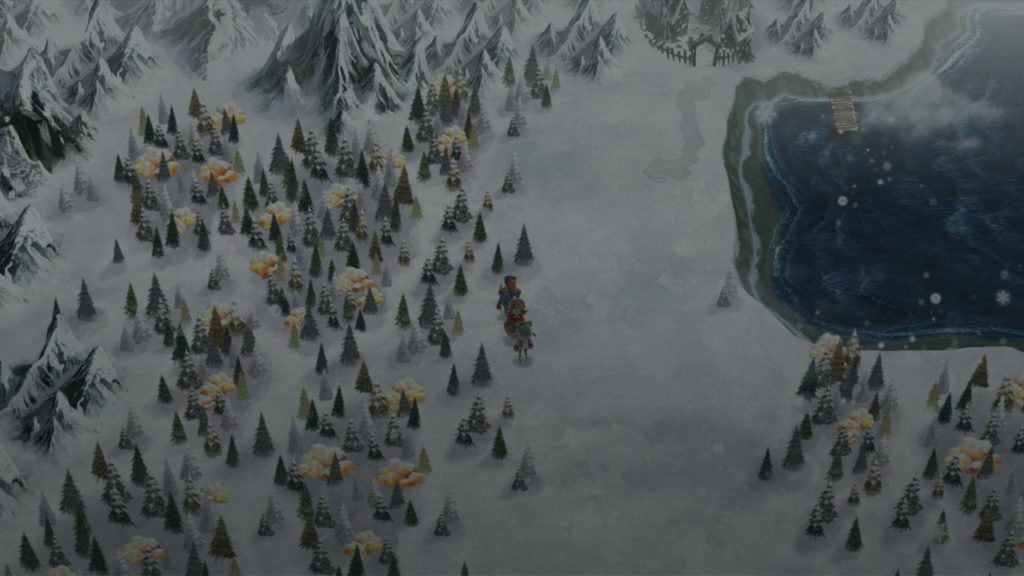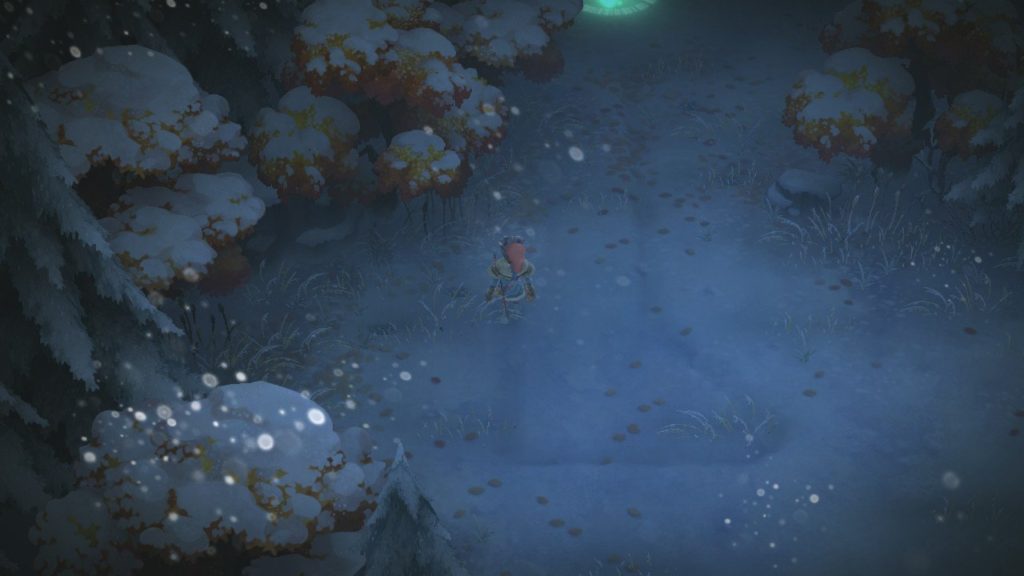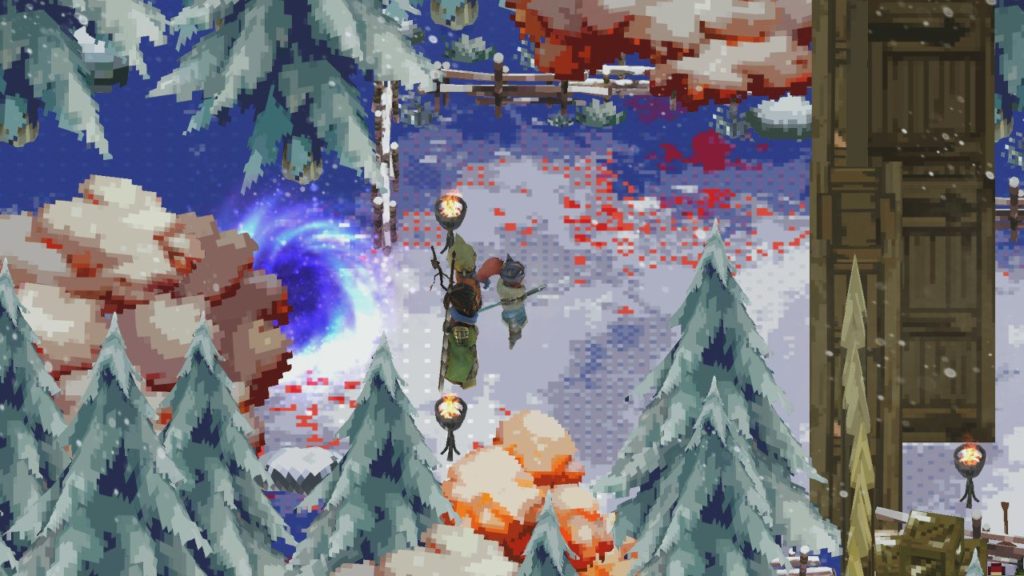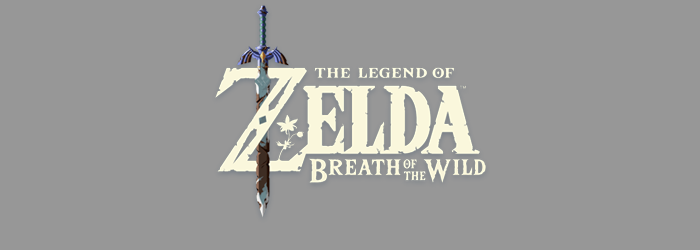- Genre: JRPG
- Platform: Switch
- Also Available On: Vita, PS4, Steam (Windows)
TL;DR
- Despite the story being thematically similar to FFX, holds its own well enough to make the game worth playing.
- Battle system was well done. Easily possible to break the game with certain skill and gear combos, but the positioning additions to the ATB system were well placed.
- Doesn’t do anything egregiously bad, but there’s some obvious flaws in most parts of the game
- Game in general showed signs of being either incomplete or rushed to completion, but the core that is there is really strong.
I am Setsuna is definitely a JRPG that points back to the kinds of games Square was releasing back in the 90s and early 00s. It directly uses a very Final Fantasy styled ATB battle system, uses a very Final Fantasy styled story, and has the same sort of mage/healer/melee/assassin character archetypes that the Final Fantasy games used. While there are some definite places where the game has some pretty major flaws, the base that is there shows a lot of promise for the next title by Tokyo RPG Factory, Lost Sphear.
Since it’s realistically the thing that any JRPG spends the most time in, let’s talk about the battle system. If you’ve played anything between about FF4 through 9, you’ll recognize the ATB system in place. The battle runs in real-time, filling a meter. When it’s full, that person can attack. Faster characters attack more often, rinse and repeat. In general the system has worked fine for 25 years, and in this game it’s no different.
The big things that I am Setsuna really does well that are kind of atypical usually have to do with positioning. Rather than being fixed on one side of the screen, both friendly and enemy characters can move around the play field. This allows for some interesting setups in hitting multiple enemies at once, whether it’s with AoE magic, melee swipes, or pass through projectiles. This also means that party buffs, healing, and more can also take advantage of the AoE nature in order to optimize spell use. There’s also a number of combo skills with multiple party members that take advantage of this, allowing you to line up multiple enemies in one go for much larger damage.
However, the battle system also shows one of the biggest signs of lack of polish in the game. In general, the boss fights were a lot of single mechanics. Put on the right gear, find the right party members, and you’re guaranteed an easy victory. Because skills are equippable, the amount of flexibility is astounding, but can lead to some extreme breaking of the game’s difficulty curve. For example, the Counter skill blocks ALL physical damage, so phsyical-only bosses revolved around one party member doing nothing but staying in Counter, one party member casting a Taunt skill on the Counter person, and a third party member being there to grind out damage. It got so bad that by the end of the game, I was using three very specific party members for everything. The title character Setsuna had a skill that did massive AoE damage + AoE Heal. I equipped her with MP drain on damage taken and MP drain on damage dealt passive abilities, effectively meaning she did everything at next to no cost. The second character cast a party Protect spell, and the third just did damage. It made the game trivial, but it also seemed like what the game was balanced for given the incoming damage numbers.
The game’s presentation was the next point where there were some big highs, and also big lows.

For one thing, the game is astoundingly gorgeous. The overworld takes on a very painteresque feel, with billboarded mountains and trees over a simple 3D landscape. The main problem here is that there are no battles in the overworld at all, so you’re just running through from point A to B as fast as possible. The little details as you walk around in the environment, from the snow falling out of trees to the trails you leave in the snow are also always well done. However, that’s the big problem; EVERYTHING IS SNOW. There’s effectively no environmental variety, so the towns all look similar, the forests all look similar, the caves all look similar, and they are all frozen over.

The soundtrack was also a bit of a mixed bag. While the piano-only focus of the soundtrack works fantastically well in emotional moments, high tension moments lack any sort of depth to the soundtrack, with a high pace and high volume piano not really ever being enough to carry through. The fact that the battle music adds in a bass line and some light percussion makes this even more frustrating, because they clearly put at least some thought into expanding out the landscape of the music they were writing. It definitely didn’t need to be fully orchestrated, but adding a bit more depth in places to the music would have greatly benefited the game’s exciting moments.

The little details were the last place where things were a bit of a mixed bag. Once you get the air ship, you can run into a developer island that shows a clear nod to the team’s past games. It’s entirely pixel art, with classic 16-bit music and visuals. However, there’s a lot of places where things seem like they were left unfinished, with numerous empty houses in the overworld, bath houses with no meaning, and worst of all, gaining a new party member quite literally at the door to the final boss room. There’s also a number of high level dungeons and scattered encounters that would be great to fight post-game, but can be a big pain to get to due to some of the traversal back through long linear dungeons. I hate to say the game feels unfinished, but there’s some things that definitely give me the impression that the team’s budget couldn’t quite match their ambition.
In general, I am Setsuna is a game that JRPG fans should at the very least check out. There’s better out there for people new to the genre, but for folks looking for an ATB-system throw back, this is a pretty solid one. For a game that’s regularly under $30, you can do much worse. However, don’t expect a perfect game. It definitely has its flaws, but for me it was worth overlooking them to experience what had been done here.

